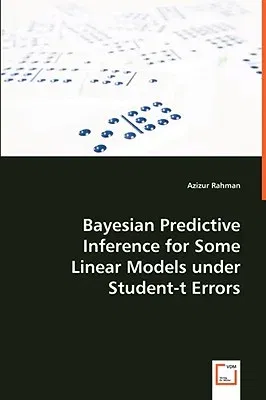In real life often we need to make inferences about the behaviour of the
unobserved responses for a model based on the observed responses from
the model. Regression models with normal errors are commonly considered
in prediction problems. However, when the underlying distributions have
heavier tails, the normal errors assumption fails to allow sufficient
probability in the tail areas to make allowance for any extreme value or
outliers. As well, it cannot deal with the uncorrelated but not
independent observations which are common in time series and econometric
studies. In such situations, the Student-t errors assumption is
appropriate. Traditionally, a number of statis-tical methods such as the
classical, structural distribution and structural relations approaches
can lead to prediction distributions, the Bayesian approach is more
sound in statistical theory. This book, therefore, deals with the
derivation problems of prediction distri-butions for some widely used
linear models having Student-t errors under the Bayesian approach.
Results reveal that our models are robust and the Baye-sian approach is
competitive with traditional methods. In perturbation ana-lysis, process
control, optimization, classification, discordancy testing, interim
analysis, speech recognition, online environmental learning and sampling
cur-tailment studies predictive inferences are successfully used.


